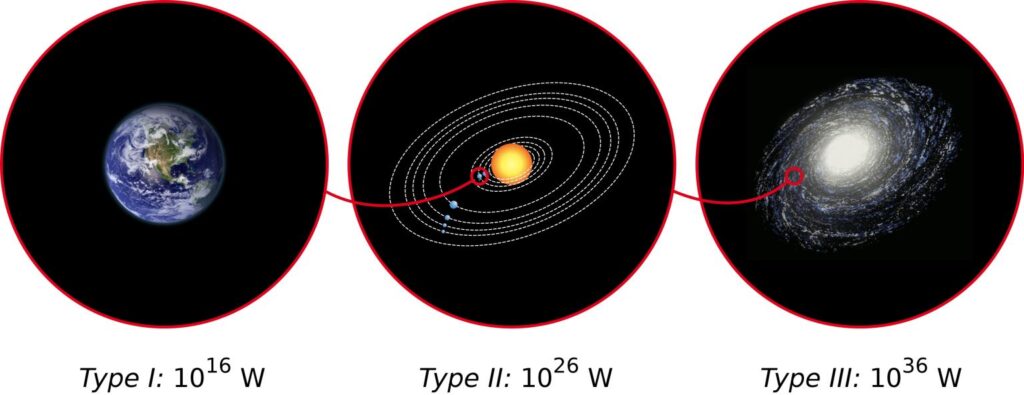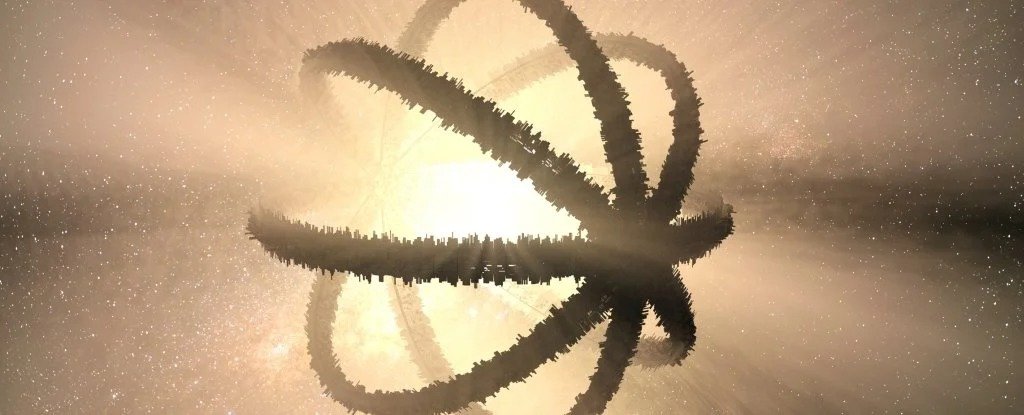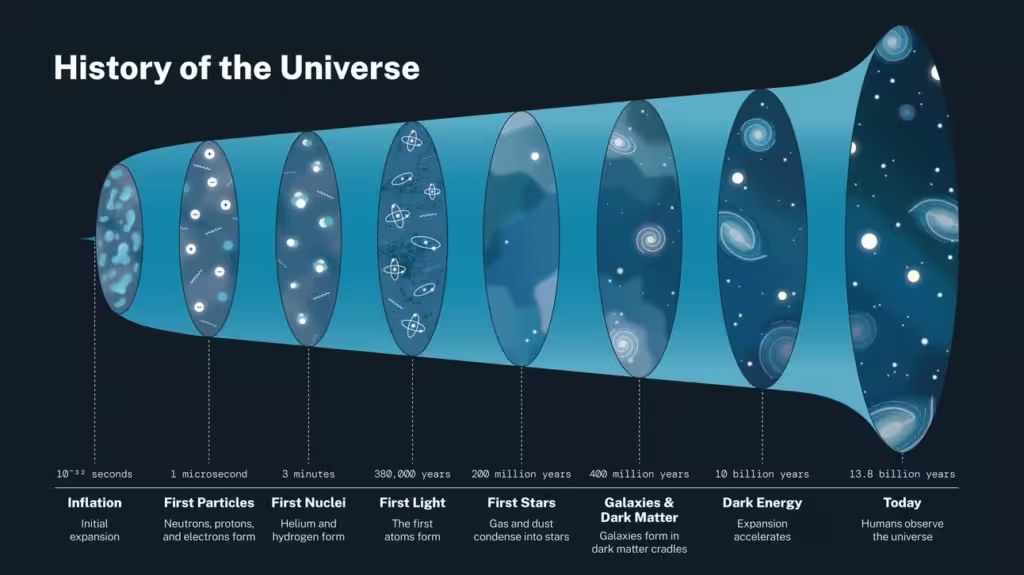PHENOMENON
PHENOMENON
Where Do We Stand on the Kardashev Scale?
- Published On
September 27th, 2024
- Author
Hassan Muzzafar Haq
Table Of Contents
- Published On
September 27th, 2024
- Author
Hassan Muzzafar Haq
Introduction
The duality of man’s greatest triumphs is that they seem both monumental and miniscule, all at once. We’ve split the atom, walked on the moon, and sent probes to the outer reaches of our solar system. Yet, when we look up at the night sky, we are reminded of how small and isolated we are—clinging to a small blue planet in a universe of colossal scale. Our greatest advancements and achievements have allowed us to make great leaps in our understanding of the cosmos, but the sheer enormity of space ensures that no matter how far we venture in our pursuit of knowledge, there will always be an abyss of enigmatic mystery ahead of us.
Still, we now find ourselves in a time of unprecedented technological growth. From artificial intelligence to fusion energy, the progression of our society globally is reaching new heights with each year. Even so, with all the groundbreaking developments in the past century, How advanced are we, really? How would we even measure such a thing? Are we merely scratching the surface of what’s possible, or are we on the cusp of a breakthrough that could propel us toward the stars? All these questions point to a fundamental framework for understanding our place in the cosmos: the Kardashev Scale. In an era where science fiction increasingly resembles science fact, the Kardashev Scale offers a thrilling roadmap to the future—or at least a cosmic grading system for our current status.
This scale, introduced by Russian astrophysicist Nikolai Kardashev in 1964, provides a structured way to gauge a civilization’s technological progress based on its energy consumption. By measuring our ability to harness and utilize energy—from the local resources of our planet to the potential control of our star's output and beyond—this scale offers a lens through which we can assess our advancement. In short, it’s not just a measure of technological prowess but a gauge of a civilization’s potential to manipulate and harness the energies of planets, stars, and even entire galaxies. As we chart our course along this scale, we’ll confront both the promises and perils of our future, and attempt to define what being an “advanced" civilization entails in the grand scheme of the universe.
The Three Types

A diagram illustrating the Energy Consumption Levels of Civilizations according to the Kardashev Scale. (Photo Credit: Wikipedia)
Now that we are familiar with our (rather lowly) place on the scale, let's delve into the key categories themselves. Chiefly, the scale is divided into three types, each representing a major leap in energy mastery:
Type I Civilization
Imagine a civilization that can harness all the available energy on its home planet. That’s a Type I civilization—essentially, a global energy superpower. This designation is awarded to civilizations that have successfully harnessed and utilized all the energy from their home star, effectively collecting and storing it to meet the energy needs of their expanding population. Such a society would not only have mastered the intricacies of renewable energy sources like solar, wind, and geothermal but would also have conquered the challenges of energy storage and distribution on a planetary scale. Think of it as Earth becoming one gigantic, well-oiled machine.
Reaching Type I status would require a global transformation, necessitating the development of advanced technologies and international cooperation on an unparalleled scale. The implications would be profound: energy scarcity would become a relic of the past, and with it, many of the conflicts that arise from competition over resources. Climate change, driven by the burning of fossil fuels, would no longer be a threat. In this new world, the planet itself would be managed as a complex, interconnected system, with humanity acting as the steward of Earth's natural and technological resources.
Essentially, we'd need to ramp up our energy production by over 100,000 times to hit this level. But with all of Earth's energy at our disposal, we could essentially have control over natural forces—think managing volcanoes, tweaking the weather, and even stopping earthquakes. It sounds pretty incredible, but in the grand scheme of things, it’s just the basics. Compared to what more advanced civilizations could do, it’s just the tip of the iceberg.
Type II Civilization
The leap from Type I to Type II civilization marks a dramatic expansion of energy control from the planetary to the stellar scale. A Type II civilization would harness the entire energy output of its entire star, an achievement that would require engineering capabilities beyond anything humanity currently possesses.. The energy consumption would then be comparable to the luminosity of the Sun, around 4×1026 watts. The most widely discussed concept for achieving this is the Dyson Sphere, a theoretical megastructure that could encompass a star to capture its energy. This could take various forms, from a solid shell to a swarm of solar collectors orbiting the star, each method designed to intercept as much solar energy as possible.

An artistic rendering of a Dyson Sphere, a megastructure that could mark the technological prowess of a Type II civilization. (Photo Credit: Getty Images)
With control over such immense energy resources, a Type II civilization would have the capability to undertake projects of staggering magnitude. This includes the colonization of other planets within its star system, the construction of vast space habitats, and the development of technology to manipulate gravity and other fundamental forces. What would this much energy mean for a civilization? Well, in theory, nothing known to science could bring down a Type II civilization. Imagine if humanity managed to reach this status and a moon-sized asteroid was on a collision course with Earth. With that kind of power, we could simply vaporize it out of existence. And if we had a bit more time, we could even shift Earth out of its path. But if relocating our planet sounds a bit too drastic, no worries—we could always move Jupiter or another planet into the asteroid's path. Now that’s something out of an Arthur C. Clarke novel!
Also, a Type II civilization might engage in stellar engineering, modifying its star to extend its lifespan or increase its energy output. It could even potentially move planets within the star system to optimize conditions for life or resource extraction. The implications for space exploration are profound, as this level of energy control would enable interstellar travel on a scale that is currently the stuff of science fiction. However, it is important to note that the construction of such megastructures and the manipulation of stellar forces would require an advanced understanding of physics and engineering, pushing the boundaries of what we currently believe to be possible.
Type III Civilization
The final stage on the Kardashev Scale, a Type III civilization, represents a level of technological and energy mastery that borders on the incomprehensible. Such a civilization would command the energy of an entire galaxy, tapping into the power of billions of stars, black holes, and other celestial phenomena. This would signify access to energy comparable to the luminosity of the entire Milky Way galaxy, about (4×1037 watts), requiring an organizational and technological framework that spans across light-years, with the civilization's influence extending to every corner of its galaxy.
A Type III civilization would likely possess the ability to manipulate space-time, enabling faster-than-light travel and communication. It could construct Dyson Spheres around multiple stars, harvest energy from supermassive black holes, and perhaps even create new stars or modify galactic structures to suit its needs. The civilization would also have the capability to undertake vast galactic-scale projects, such as the terraforming of planets in distant star systems, the construction of interstellar highways, or the creation of artificial galaxies. After hundreds of thousands of years of both biological and technological evolution, the beings of a Type III civilization could be vastly different from the humans we are familiar with today. They might be cyborgs—blending biological and robotic elements—where descendants of present-day humans could be just one of many diverse sub-species in a far more advanced society.
The implications of encountering such a civilization are profound and potentially terrifying. A Type III civilization might view Type I or Type II civilizations as we view microorganisms—as either potential allies or insignificant entities. The Fermi Paradox, which questions why we have not yet detected evidence of such civilizations, becomes particularly relevant at this level. Are Type III civilizations simply too far away or too advanced for us to detect? Or do they exist in forms that are beyond our current understanding?
Alternatively, it is possible that Type III civilizations are rare or nonexistent due to the immense challenges of reaching this level of development. The energy demands, coupled with the need for long-term stability across millions or billions of years, might lead to the collapse of civilizations before they can achieve such a scale. It is also conceivable that such civilizations might choose to hide their presence, utilizing advanced technology to avoid detection by less advanced species. In any case, even just envisioning such a high form of society is almost impossible for our species in the current epoch of our existence.
Beyond The Scale
As if galactic dominance wasn't abstract enough, rough ideas for a possible Type IV and Type V civilization have also been proposed (albeit, they sound more imaginative then most sci-fi premises). Type IV civilizations might approach the capability to harness the energy of the entire universe, allowing them to navigate the ever-accelerating expansion of space. These advanced beings could even inhabit the interiors of supermassive black holes. Such achievements would defy our current understanding of energy generation, necessitating the discovery and application of entirely new and exotic principles of physics beyond our present knowledge.

Based on the prevailing model of the Universe's expansion since the Big Bang (showcased above), it is possible that there are planets older than Earth that could support advanced civilizations. (Photo Credit: Ad Astra)
Type V represents the ultimate frontier for advanced civilizations, where beings could achieve god-like status with the ability to shape and control the very fabric of the universe. At this stage, these entities would possess the knowledge and power to manipulate cosmic forces on a scale exceeding even the farthest confines of our mind, altering the universe according to their will. As we ponder the potential of Type IV and Type V civilizations, we are reminded of the vastness of our ambitions and the profound mysteries that lie ahead. The journey from Type 0 to these advanced stages is not merely about technological advancement or energy consumption; it’s about evolving our collective consciousness, fostering cooperation, and addressing the existential challenges of our time. Fundamentally, it's about unity; only when we forego our most primitive and ancient urges, i.e division and tribalism, will we be able to evolve and become a more ‘advanced society’ in the ages to come.
Conclusion
“The cosmos is within us. We are made of star-stuff. We are a way for the universe to know itself.” - Carl Sagan, Cosmos
As we look to the stars and imagine the possibilities, let us remember that our quest for knowledge and advancement is not just about reaching the next milestone, but about understanding our place in the vast and wondrous expanse of the cosmos, and working towards that understanding as a unified whole instead of competing for it as severed halfs.
Subscribe To Our Newsletter
Receive amazing space news and stories that are hot off the press and ready to be read by thousands of people all around the world.
